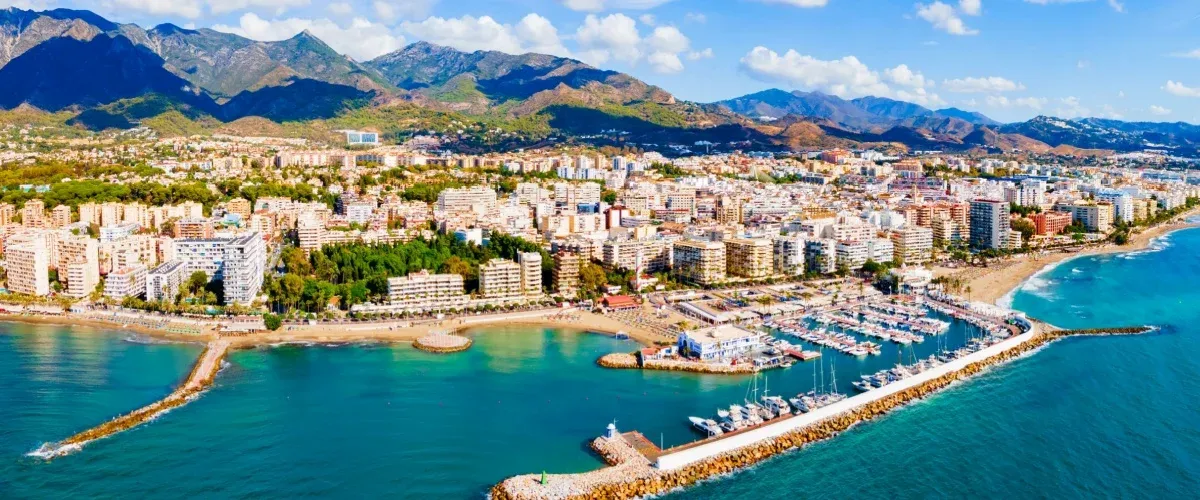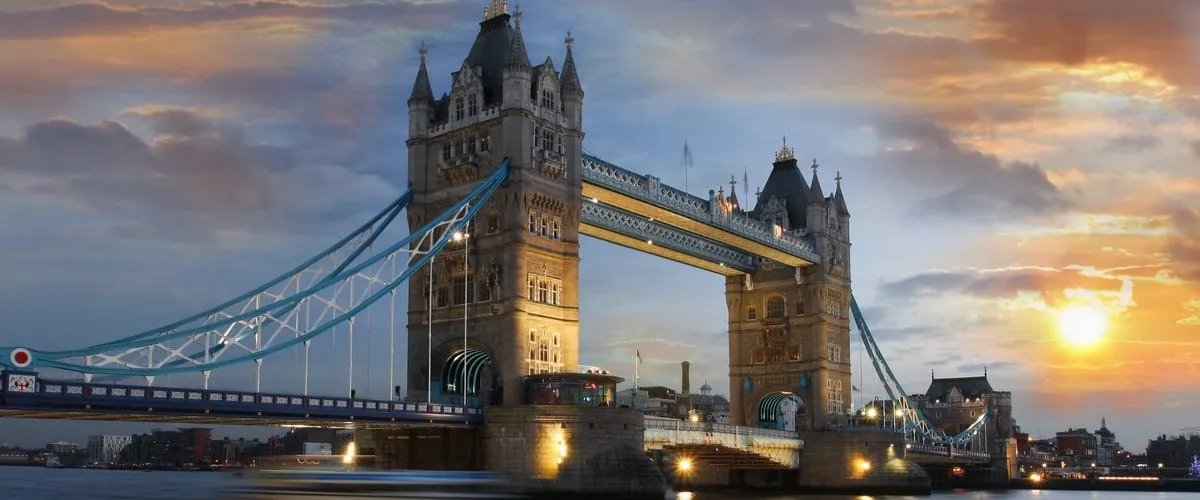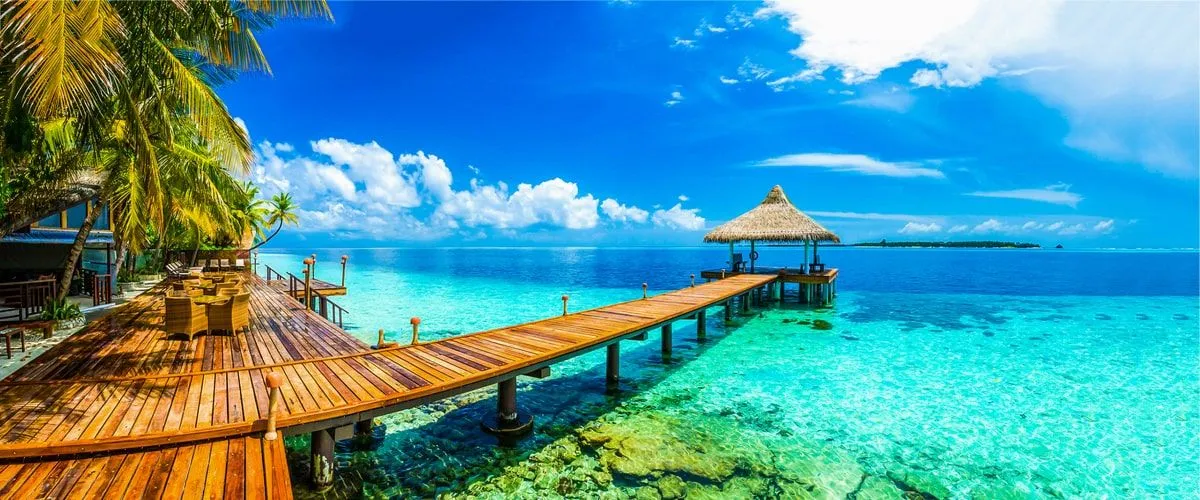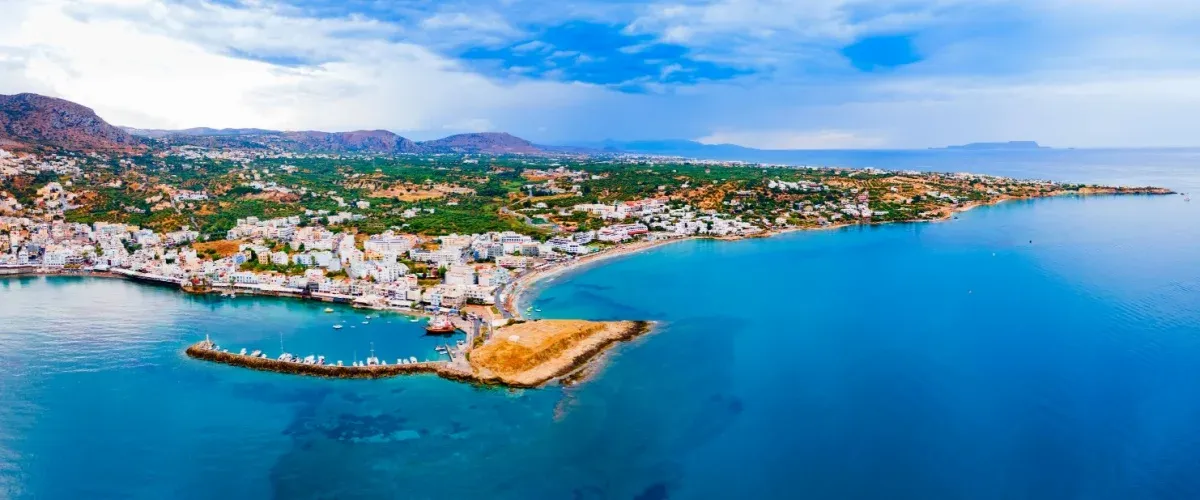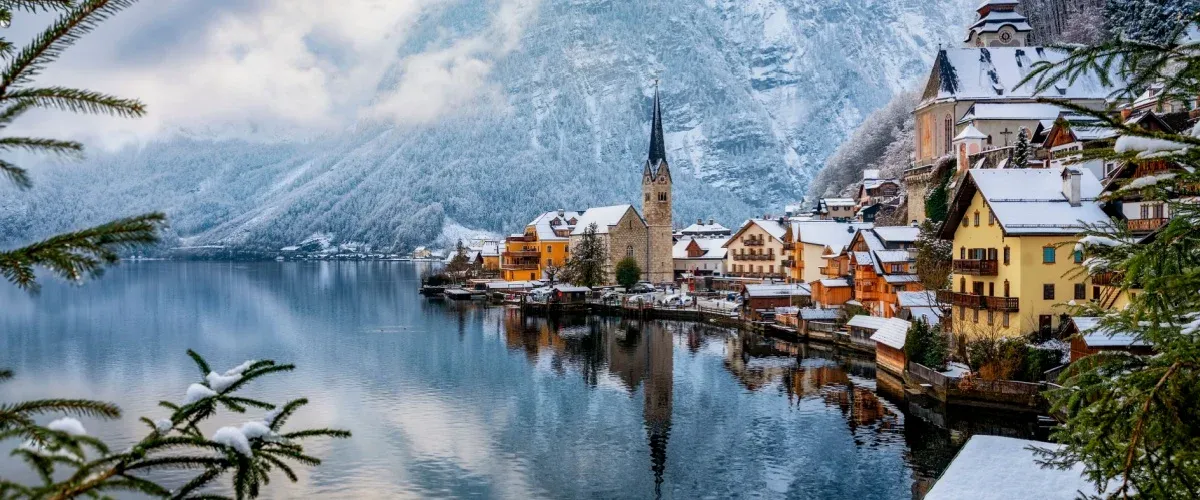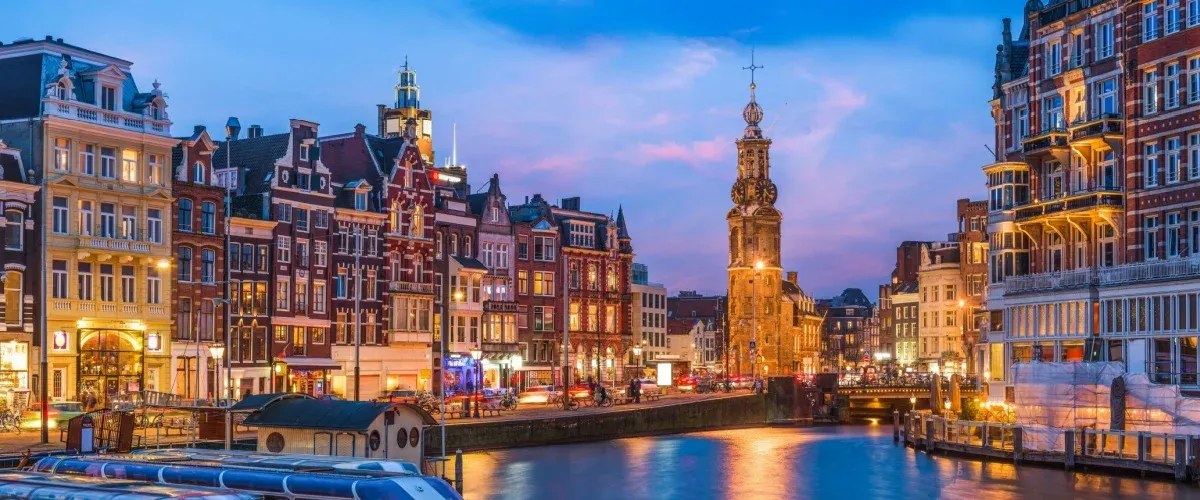The beaches in Spain are some of the most beautiful in Europe, offering something for every traveler. With over 5,000 kilometers of coastline, Spain is home to lively shores, quiet coves, and everything in between. You can visit Playa de Ses Illetes in Formentera for crystal-clear waters and soft white sand or enjoy the colorful sunsets at Cala Comte in Ibiza. Families can spend fun-filled days at the beaches of Costa del Sol, while adventure seekers can try surfing along the northern coasts of Galicia or the Basque Country. Each beach has its own charm, from the vibrant Mediterranean vibe to the more peaceful and natural settings in the north. Whether you want relaxation, adventure, or a mix of both, the beaches in Spain promise an unforgettable escape surrounded by stunning views and warm waters. Here in this specific blog we have mentioned some of the stunning beaches of Spain.
Beaches in Spain: 10 Stunning Spots for Sun, Sand, and Relaxation
1. Playa de Ses Illetes, Formentera
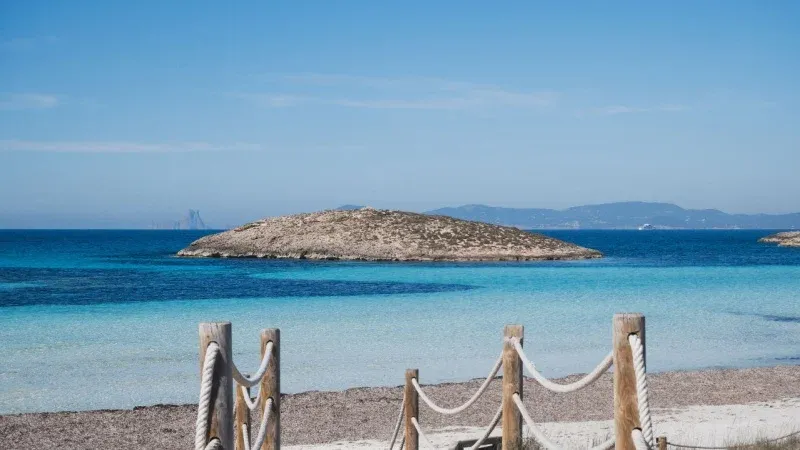
This is undoubtedly one of the most beautiful beaches in Europe. Located within a protected natural park, the beach offers a calm and clean environment, perfect for swimming, sunbathing, or simply relaxing by the shore. The shallow waters make it safe for families, while its natural beauty attracts couples and solo travelers. Small beach bars nearby serve fresh seafood and snacks, adding to the laid-back vibe. This beach is perfect to enjoy a peaceful walk along the shoreline. Swimming is also one of the prominent activities at Playa de Ses Illetes.
Best Time to Visit: May to September
Pro Tips: Arrive early to secure a good spot. Consider renting a scooter or bike to get here, as car access is limited and has an entry fee.
2. Praia das Catedrais, Galicia

Known as the "Beach of the Cathedrals," this Galician gem is famous for its majestic rock formations and arches, sculpted by the wind and waves. During low tide, a stunning landscape of sea caves and towering arches is revealed, creating natural passageways to walk through. It's a truly magical and dramatic coastal spot. The water is colder than in the south, but the sheer beauty of the scenery is the main draw. It’s an ideal spot for photography and exploration. The beach has a unique and mystical vibe to enjoy a perfect holiday in Spain.
Best Time to Visit: During low tide is essential. Visit between April and October for better weather.
Pro Tips: You must book a free access pass online in advance during peak season (summer and Easter) as visitor numbers are restricted to protect the environment. Check the tide times before you go.
Suggested Read: Things to do in Spain: To Fulfill the Dreams of Every Thrill Seeker
3. Playa de Bolonia, Cádiz
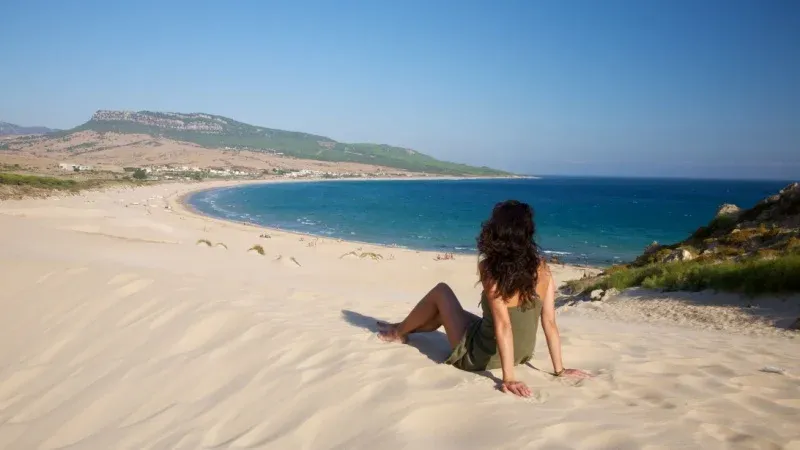
Located on the Costa de la Luz near Tarifa, Playa de Bolonia is a spectacular, unspoiled beach known for its enormous, 30-meter-high sand dune. Climbing the dune offers breathtaking views of the coastline and even across the Strait of Gibraltar to Africa on a clear day. The beach is also home to the well-preserved Roman ruins of Baelo Claudia, just behind the sand. The vibe is wild and natural, popular with windsurfers, families, and nature lovers. The water is crystal clear, and the fine white sand is perfect for sunbathing.
Best Time to Visit: June to September
Pro Tips: Bring your own snacks and water, as facilities are minimal. Wear sturdy shoes if you plan to climb the dune.
4. Cala Comte, Ibiza
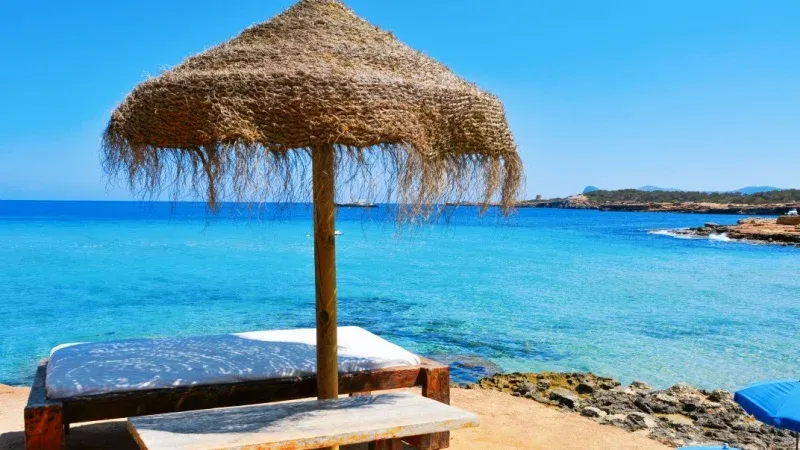
Ibiza is famous for its sunsets, and Cala Comte is one of the best places on the island to watch one. This beautiful beach features several coves with golden sands and unbelievably clear, turquoise waters, making it perfect for swimming and snorkeling. You can see several small islands from the shore, adding to the picturesque view. The atmosphere is buzzing and vibrant, especially in the late afternoon as people gather for the sunset ritual. It attracts a diverse crowd of couples, groups of friends, and families.
Best Time to Visit: May to October
Pro Tips: Parking is limited and fills up quickly. Consider taking a bus or ferry. The restaurants here are popular, so book a table in advance if you want a prime sunset viewing spot.
Suggested Read: Honeymoon in Spain: Bloom Your Romance Amidst the Hypnotic Charm
5. Playa de Muro, Mallorca
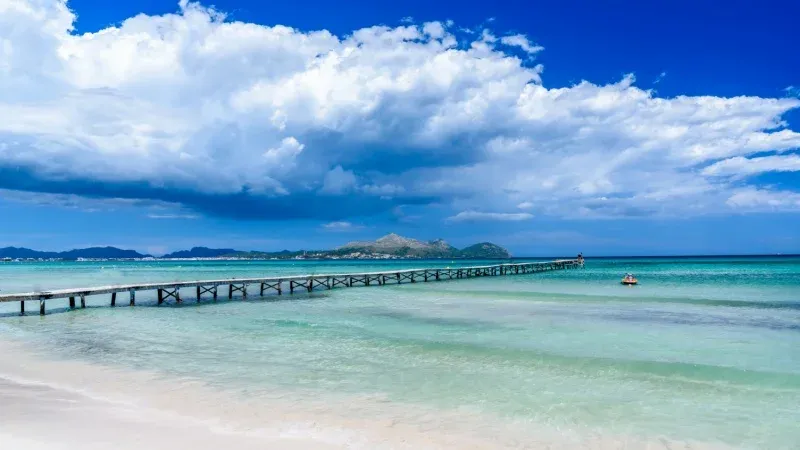
Stretching for nearly six kilometers along the Bay of Alcúdia, Playa de Muro is the perfect family-friendly beach in Spain. Its calm, shallow, and crystal-clear turquoise waters make it incredibly safe for children to splash around in. The beach is divided into different sectors, with some areas offering more facilities like restaurants, sun loungers, and water sports, while others are more natural and backed by pine trees and sand dunes. It has a relaxed, family-oriented vibe and has been awarded Blue Flag status for its cleanliness and safety.
Best Time to Visit: May to September.
Pro Tips: The beach is very long, so if you're looking for a quieter spot, head towards the Es Comú de Muro section, which is part of the S'Albufera Natural Park.
6. La Concha Beach, San Sebastián
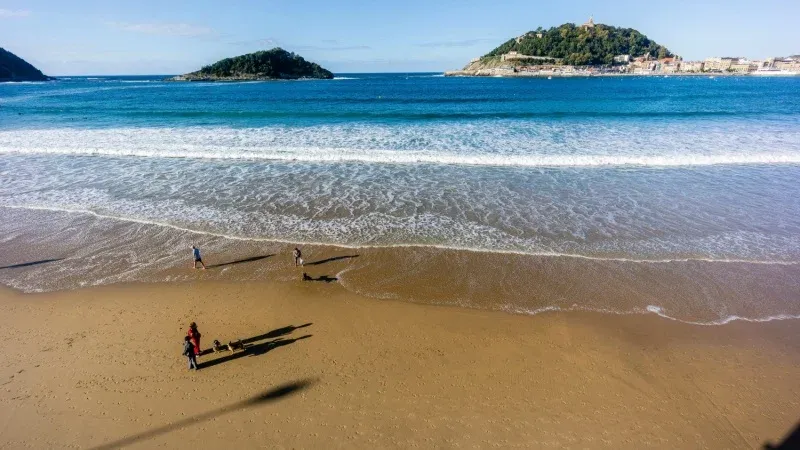
Often hailed as one of the best urban beaches in Europe, La Concha in San Sebastián offers a perfect blend of city life and coastal beauty. Its iconic crescent shape is protected from the open sea by Santa Clara Island, resulting in calm waters ideal for swimming and paddleboarding. The beach is framed by a beautiful promenade, perfect for a leisurely stroll. Its central location means you're just steps away from the city's world-famous pintxos bars. The vibe is sophisticated yet relaxed, popular among locals and tourists.
Best Time to Visit: June to September
Pro Tips: The tide changes dramatically here. At high tide, the beach can become quite narrow. Check a tide chart to plan your visit.
Suggested Read: Places to Visit in Spain: A Complete Guide to Explore the Vibrant Country
7. Cala Macarelleta, Menorca
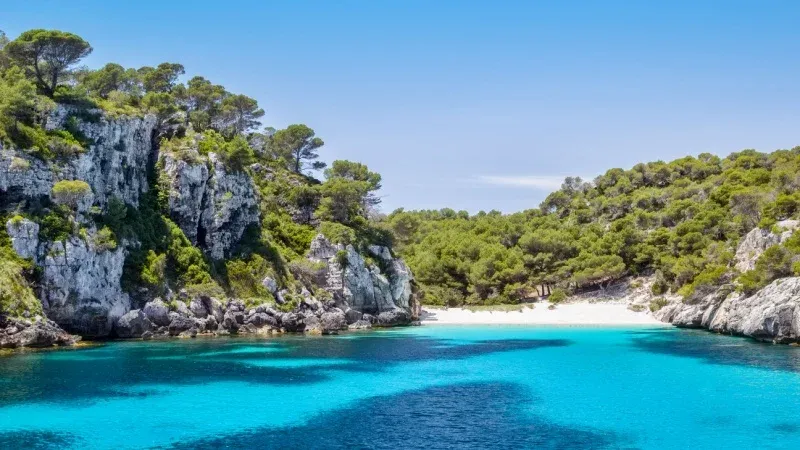
Cala Macarelleta in Menorca is one of the island’s most beautiful hidden spots. Located between rocky cliffs and lush greenery, this small beach offers powdery white sand and bright turquoise waters. It’s perfect for swimming, snorkeling, or just soaking up the sun in a quiet setting. Accessible only by a short hike or by boat, it keeps a serene and natural vibe that feels far from the busy tourist areas. For the best experience, visit early in the morning before it gets crowded, and enjoy the calm beauty that makes Cala Macarelleta a true Mediterranean gem.
Best Time to Visit: May to September
Pro Tips: The walk from the Cala Macarella car park takes about 15-20 minutes. Wear comfortable shoes. There are no facilities at Macarelleta itself, so bring everything you need.
8. Playa de Papagayo, Lanzarote

Playa de Papagayo in Lanzarote is a must-visit for beach lovers. Situated inside a protected natural park, this small bay is known for its golden sand and crystal-clear waters. Its calm, shallow sea makes it perfect for swimming or snorkeling. The surrounding cliffs create a quiet, sheltered spot that feels untouched and serene. You can come here to relax, soak up in the sun, or watch the stunning sunsets over the Atlantic. If you want a peaceful escape with natural beauty, Playa de Papagayo is the perfect choice.
Best Time to Visit: All year round, all thanks to Lanzarote's mild climate.
Pro Tips: Access is via a bumpy dirt track, for which a small toll is charged per vehicle. There is one small restaurant (chiringuito) on the cliff top, but it's best to bring your own supplies.
Suggested Read: Top Places to Visit in London For Witnessing the London Royalty
9. Playa del Silencio, Asturias
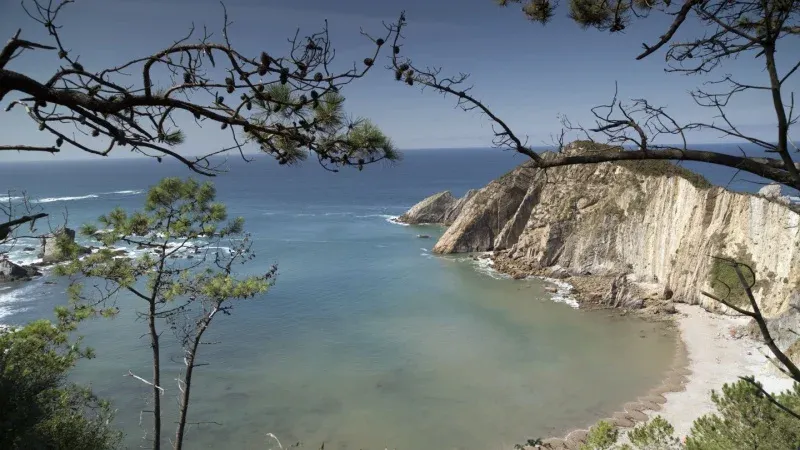
"The Beach of Silence" in Asturias lives up to its name. Surrounded by dramatic cliffs and lush greenery, this secluded beach is known for its untouched beauty and calm atmosphere. The shoreline is a mix of smooth pebbles and golden sand, with clear waters perfect for a quiet swim. It’s not a place for loud activities or crowds, making it ideal for travelers seeking peace and natural scenery. With its wild, rugged charm, Playa del Silencio is perfect for relaxing, taking photos, or simply enjoying the sound of the waves.
Best Time to Visit: June to September
Pro Tips: Access involves a steep flight of stairs down the cliffside. It's not easily accessible for everyone. There are no facilities.
10. Platja Gran, Tossa de Mar
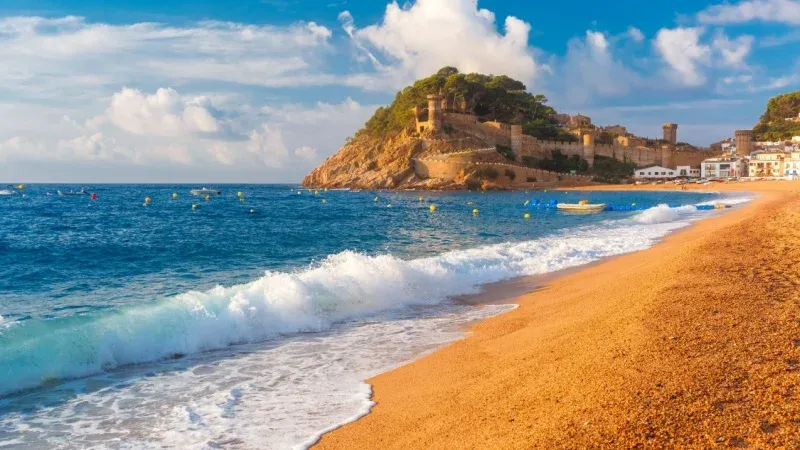
Located on the Costa Brava, Platja Gran is the main beach of the charming medieval town of Tossa de Mar. What makes it unique is the stunning backdrop of the fortified 13th-century Vila Vella (Old Town) that looms over one end of the bay. The beach itself is a wide, crescent-shaped stretch of coarse golden sand with clear blue water. It’s a fantastic family beach with plenty of space and amenities, including boat trips, water sports, and numerous restaurants and cafes along the promenade. The vibe is lively and historic to enjoy a perfect beach vacation.
Best Time to Visit: June to September.
Pro Tips: Take a walk up to the old town walls for a spectacular panoramic view of the beach and coastline.
Suggested Read: Stunning Beaches Near London For Mesmerizing Retreat
How to Make the Most of Your Beach Day in Spain
- Arrive Early, Especially in Summer: Parking can be a major challenge at popular beaches. Arriving before 10 AM helps you secure a spot and claim a prime piece of sand.
- Embrace Sun Safety: The Spanish sun is strong. Use a high-SPF, reef-safe sunscreen, wear a wide-brimmed hat, and consider bringing a beach umbrella for shade.
- Stay Hydrated and Snack Smart: Pack plenty of water and some snacks. For a local touch, grab a "bocadillo" (sandwich) from a local shop before you head to the shore.
- Respect the Environment: Always take your trash with you. Many of Spain’s best beaches are in protected areas, so be mindful of local rules and leave no trace.
- Check the Tides and Flags: For beaches with significant tidal changes (like in the north), check a tide chart. Always pay attention to the beach safety flags (green for calm, yellow for caution, red for no swimming).
- Rent a Kayak or Paddleboard: Seeing the coastline from the water offers a completely new perspective. Many beaches offer rentals for an hour or two.
- Use Public Transport: For easily accessible beaches like La Concha or those in Ibiza, using local buses can save you the stress and cost of parking.
Final Thoughts
It is evident that Spain is a dream destination for anyone looking to explore the best beaches in Spain. From lively shores perfect for families to quiet coves for couples, every traveler will find their ideal escape. The southern coast dazzles with golden sands and crystal waters, while the northern beaches offer peaceful, natural beauty. Add in Spain’s rich culture, mouthwatering cuisine, and stunning views, and you have the perfect mix for an unforgettable holiday. Ready to plan your getaway? Book your Spain tour packages with Regency Holidays and explore the most beautiful beaches in Spain with ease and comfort.
Beaches in Spain - FAQ’s
The best months are generally June and September when the weather is warm and sunny, the water is pleasant for swimming, and the crowds are smaller than in the peak months of July and August.
Yes, most of the popular beaches in Spain are very safe for swimming. They often have lifeguards on duty during the summer and use a flag system to indicate water conditions.
This depends on your preference! The Balearic Islands (Ibiza, Mallorca, Formentera) are famous for their turquoise waters and white sand. The Costa de la Luz has vast, golden Atlantic beaches, while the northern coast offers dramatic, wild coves.
Absolutely. Beaches like Playa de Muro in Mallorca and La Concha in San Sebastián are perfect for families, offering calm, shallow waters and plenty of facilities.
The vast majority of beaches in Spain are public and free to access. Some beaches located within natural parks may charge a small fee for vehicle access to help with conservation efforts.
Major beaches are well-equipped with facilities such as showers, toilets, sunbed and umbrella rentals, and nearby restaurants or "chiringuitos" (beach bars). More secluded coves may have no facilities at all.
Playa de Bolonia near Tarifa is world-famous for windsurfing and kitesurfing due to its strong winds. Many beaches in the Balearics and on the Costa del Sol also offer excellent options for kayaking, paddleboarding, and jet-skiing.
The Mediterranean beaches (Balearics, Costa del Sol, Costa Brava) have warm water, especially from July to September. The Atlantic coast (Galicia, Cádiz) and the northern Cantabrian coast have significantly colder water year-round.

